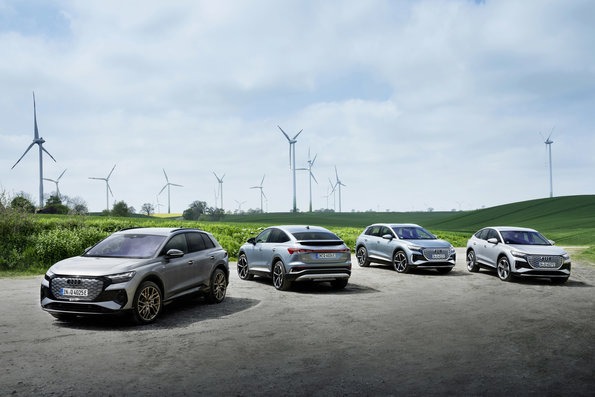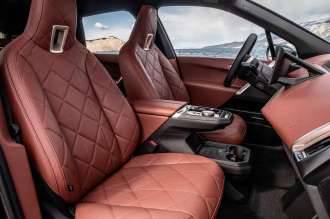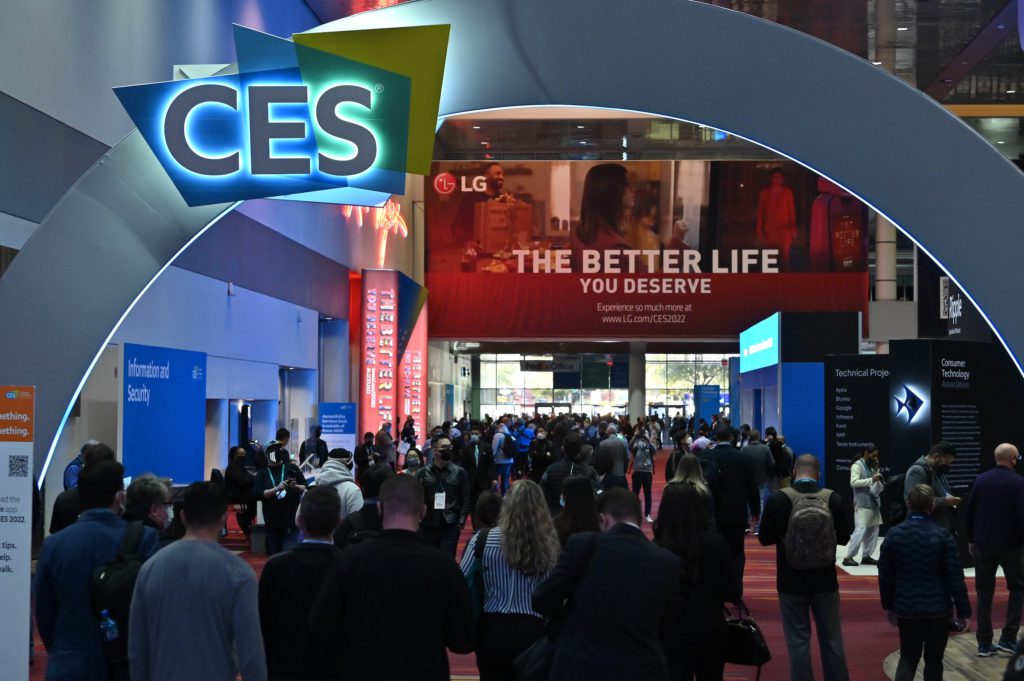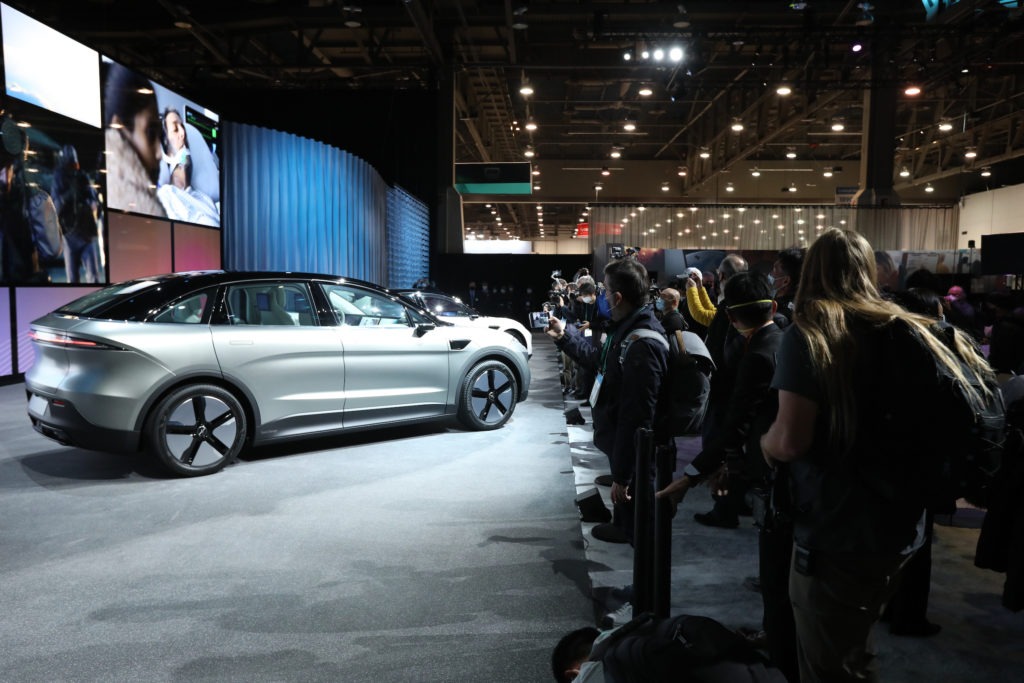This week’s automotive headlines – 29 January 2022
29 January 2022

Autovista24 selects some of the week’s automotive news, including Lamborghini’s plans to go all-electric, a multi-billion-dollar investment from GM, Audi hitting its emissions targets, Winnebago’s electric motorhome, Stellantis’ joint venture (JV) plans, and BMW sourcing sustainable leather.
First Lamborghini BEV at end of decade
Lamborghini’s chief executive, Stephan Winkelmann, confirmed the marque will launch its first battery-electric vehicle (BEV) at the end of the decade. Reuters later verified this comment with a company spokesperson. It emerged the BEV will be a four-seat coupé SUV, drawing inspiration from the grand-touring tradition, Italian press agency ANSA reported. Winkelmann also reiterated the entire brand’s line-up would go hybrid in two or three years. This includes the Huracan, Aventador, and Urus. In May last year, Lamborghini outlined its electrification roadmap including a transfer to hybrids by 2024. Meanwhile, competitor Ferrari already unleashed three hybrids, with a BEV due in 2025. Performance-sportscar brands used to pride themselves on getting as much as possible from an internal-combustion engine (ICE). Now they must change tack to meet emissions targets and a shifting tide of consumer preference.
Winnebago unveils electric motorhome
US motorhome manufacturer Winnebago has unveiled its first all-electric concept, the e-RV. The model incorporates an advanced drivetrain and battery package that also powers the living-area systems. The 86kWh battery provides a range of over 200km, which the company states is enough to meet the needs of 54% of new motorhome buyers, who prefer trips under that distance. However, this is based on a US report and may not be applicable to the European market. The vehicle can adapt to different charging-source capabilities, meaning it can power up at home, campsites, and dedicated charging stations, with a full recharge in 45-minutes on a fast charger. Premium galley amenities include a modern, marine-grade refrigerator, slide-out induction cooktop, and matte black sink fixtures. The bathroom includes a toilet and contemporary fixtures such as a detachable, handheld showerhead.
Stellantis wants majority stake in JV
Stellantis plans to increase its shareholding in its joint venture (JV) with China’s Guangzhou Automobile Group (GAC), from 50% to 75%. The JV was created in March 2010 by the 14-brand giant and GAC. Stellantis stated the increased shareholding would be thanks to a new regulatory framework, allowing additional foreign investments in existing JVs. It pointed to the investment as setting a new basis for its operations in China. However, Reuters later reported GAC was not happy with the way Stellantis made the announcement. While the Chinese company confirmed shareholders had been in talks about the venture, it said no formal agreement had been signed. ‘The way it was released was not approved by us and GAC Group deeply regrets it,’ GAC reportedly said. More information about Stellantis’ China operations is expected to emerge on 1 March as part of the company’s global strategic plan.
GM announces multi-billion-dollar EV investments
Detroit-based carmaker General Motors (GM) made two major announcements this week. First, the company revealed it has teamed up with South Korea’s LG Energy Solution to build a battery-cell manufacturing plant in the US. The companies plan to spend $2.1 billion via their JV Ultium Cells, with the plant expected to create 1,700 new jobs. Once it is fully operational, the facility will have 50GWh of battery-cell capacity. ‘Our third battery-manufacturing plant, fittingly located in America’s automotive heartland, will serve as a gateway to charge thousands and later millions of electric vehicles in the future,’ said Young-Soo Kwon, CEO of LG Energy Solution. In a separate announcement, GM said it would invest $7 billion in four Michigan manufacturing sites to increase its battery-cell and electric-truck manufacturing capacity. The investment will create 4,000 jobs, with the carmaker aiming to become the market leader of electrically-chargeable vehicles (EVs) in North America by 2025.
Audi within 2021 EU CO2 emissions target by 7g/km

Audi has announced that, based on preliminary figures, it achieved average emissions of 122g/km in the EU, Iceland, and Norway in 2021, 7g/km below its target of 129g/km. The brand, therefore, contributed positively to the wider Volkswagen (VW) Group’s emissions of 118.5g/km in 2021, meeting its 120.8g/km target. ‘We view fleet-wide CO2 emissions as a strong indicator of our successful electrification efforts,’ said Hildegard Wortmann, member of the board of management for sales and marketing at Audi AG. ‘Clearly exceeding our targets is further proof that we are on the right strategic path with our systematic focus on delivering the sustainable premium mobility of the future,’ Wortmann added. A significant rise in deliveries of BEVs had a particularly positive impact on the brand’s emissions. In 2021, the carmaker sold 42,991 BEVs in the EU, Norway, and Iceland, equating to a year-on-year increase of 49.8%. The Audi e-tron is the best-selling all-electric premium SUV in Europe. Audi more than doubled its range of BEVs last year, adding four new models.
BMW becomes second carmaker to join sustainable leather group

BMW Group has become the second carmaker to join the not-for-profit organisation Leather Working Group as the company looks to create a more sustainable supply chain. This marks an important step for the German OEM as sourcing leather from certified facilities has become a key part of its sustainability strategy. The Leather Working Group represents a quarter of the world’s leather producers, including tanneries, leather-processing industries and associations, as well as retailers. ‘Leather is still in demand from our customers, depending on the model and region, and is very important in the premium segment,’ said Nadine Philipp, BMW Group’s head of sustainability in the supply chain, energy. ‘That is why supporting sustainable production and processing of leather at our suppliers is a priority for us. At the same time, we still want all our customers worldwide to be able to choose the optimal product, so we also offer leather-free vehicle-equipment options.’


